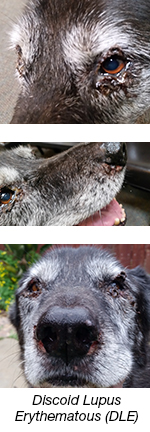Case Study: EpaZoo & Protein Losing Nephropathy
August 2015
A geriatric female spayed Chihuahua presented for lethargy and polyuria/polydypsia for several weeks duration. She had been rescued a few months prior with a history of dental disease. She had a dental cleaning prior to being adopted.
On physical exam, she was obese with cranial organomegaly. The remainder of her exam was within normal limits.
A Chemistry/CBC/Thyroid/Urinalysis and urine culture were performed. Blood work revealed an elevated ALT and ALKP. Urine specific gravity was 1.017 with 3+ protein, and an inactive urine sediment. The urine culture came back negative. An ACTH stimulation was then performed and within normal limits. A repeat urinalysis revealed 2+ protein, and a urine protein:creatinine ratio revealed that she was proteinuric at 2.8.
An abdominal ultrasound was then performed. The abdominal ultrasound findings included hepatomegaly with a hepatic mass and chronic renal changes. A coagulation panel was within normal limits. The patient was sedated for a liver biopsy, which came back as a hepatocellular adenoma. Chest radiographs were also unremarkable.
The patient was diagnosed with renal proteinuria or protein losing nephropathy (PLN), which is a pathologic increase in the quantity of protein present in the urine as a result of glomerular disease. Patients with protein losing nephropathy require a diagnostic workup to try to identify a potential underlying cause for their glomerular disease.
The patient’s blood pressure was taken and within normal limits. A Thromboelastogram (TEG) revealed that she was in a hypercoagulable state, and she was started on Plavix. Leptospirosis titers and a tick panel were also both performed and negative. She was then started on Enalapril, <strong>DermaZoo’s EPAZoo Omega-3 Liquid</strong> fatty acids and a renal diet to treat her PLN.
The treatment plan for this patient is to routinely monitor her blood pressure, renal values and urine:protein creatinine ratio as well as her liver nodule. An ultrasound-guided renal biopsy may be offered if the protein losing nephropathy progresses with treatment.
A geriatric female spayed Chihuahua presented for lethargy and polyuria/polydypsia for several weeks duration. She had been rescued a few months prior with a history of dental disease. She had a dental cleaning prior to being adopted.
On physical exam, she was obese with cranial organomegaly. The remainder of her exam was within normal limits.
A Chemistry/CBC/Thyroid/Urinalysis and urine culture were performed. Blood work revealed an elevated ALT and ALKP. Urine specific gravity was 1.017 with 3+ protein, and an inactive urine sediment. The urine culture came back negative. An ACTH stimulation was then performed and within normal limits. A repeat urinalysis revealed 2+ protein, and a urine protein:creatinine ratio revealed that she was proteinuric at 2.8.
An abdominal ultrasound was then performed. The abdominal ultrasound findings included hepatomegaly with a hepatic mass and chronic renal changes. A coagulation panel was within normal limits. The patient was sedated for a liver biopsy, which came back as a hepatocellular adenoma. Chest radiographs were also unremarkable.
The patient was diagnosed with renal proteinuria or protein losing nephropathy (PLN), which is a pathologic increase in the quantity of protein present in the urine as a result of glomerular disease. Patients with protein losing nephropathy require a diagnostic workup to try to identify a potential underlying cause for their glomerular disease.
The patient’s blood pressure was taken and within normal limits. A Thromboelastogram (TEG) revealed that she was in a hypercoagulable state, and she was started on Plavix. Leptospirosis titers and a tick panel were also both performed and negative. She was then started on Enalapril, DermaZoo’s EpaZoo omega-3 fatty acids and a renal diet to treat her PLN.
The treatment plan for this patient is to routinely monitor her blood pressure, renal values and urine:protein creatinine ratio as well as her liver nodule. An ultrasound-guided renal biopsy may be offered if the protein losing nephropathy progresses with treatment.
EPAZoo Omega-3 Liquid
DermaZoo’s EPAZoo Omega-3 Liquid is a lemon flavored, concentrated, source of 360 mg EPA (Eicosapentaenoic Acid) and 240 mg DHA (Docosahexaenoic Acid) fatty acids plus Vitamin E. EPAZoo contains USP Grade fish oil from wild caught fish.
Omega-3 fatty acids include Eicosapentaenoic Acid (EPA), Docosahexaenoic Acid (DHA), and Alpha-Linolenic Acid (ALA). Marine oil sources provide EPA & DHA. Marine oil fatty acids have been useful in the treatment of many conditions, such as osteoarthritis, inflammatory skin disorders, cardiovascular disorders, renal disease and cognitive health.
In dogs with experimentally induced chronic kidney disease, omega-3 fatty acids reduced proteinuria and interstitial cellular infiltrates, prevented glomerular hypertension, and decreased the production of proinflammatory eicosanoids compared to safflower oil (containing omega-6 fatty acids). 1
REFERENCES
- Effects of dietary polyunsaturated fatty acid supplementation in early renal insufficiency in dogs. Brown SA, Brown CA, Crowell WA, et al. J Lab Clin Med 135:275-286, 2000.





